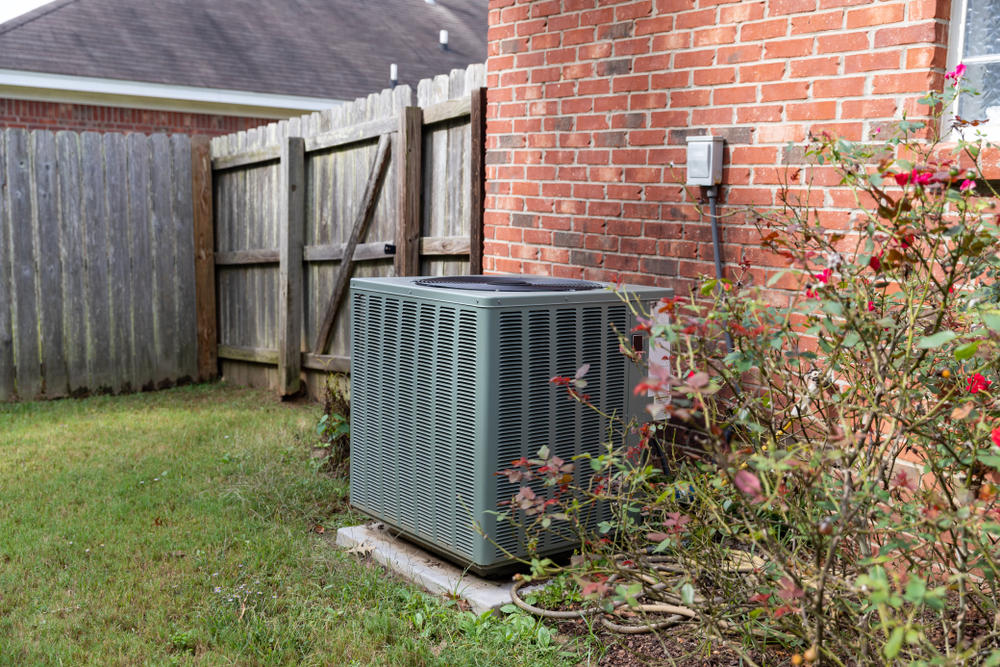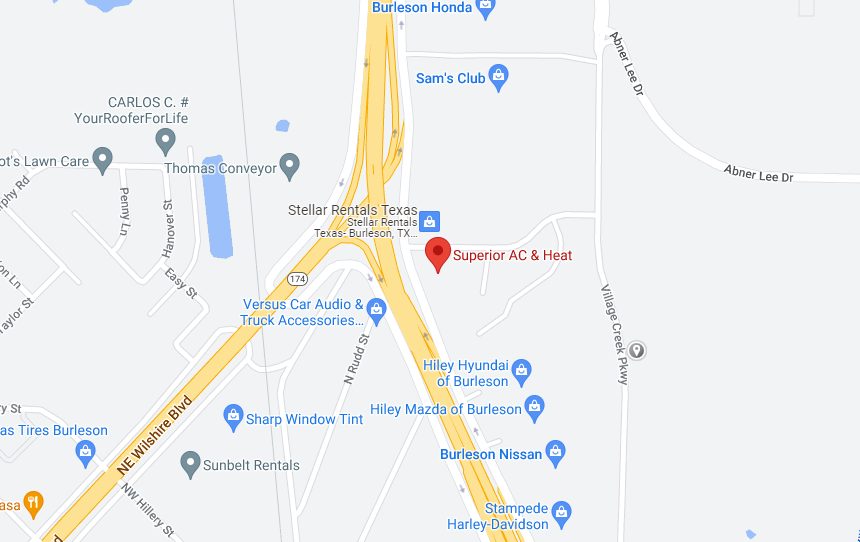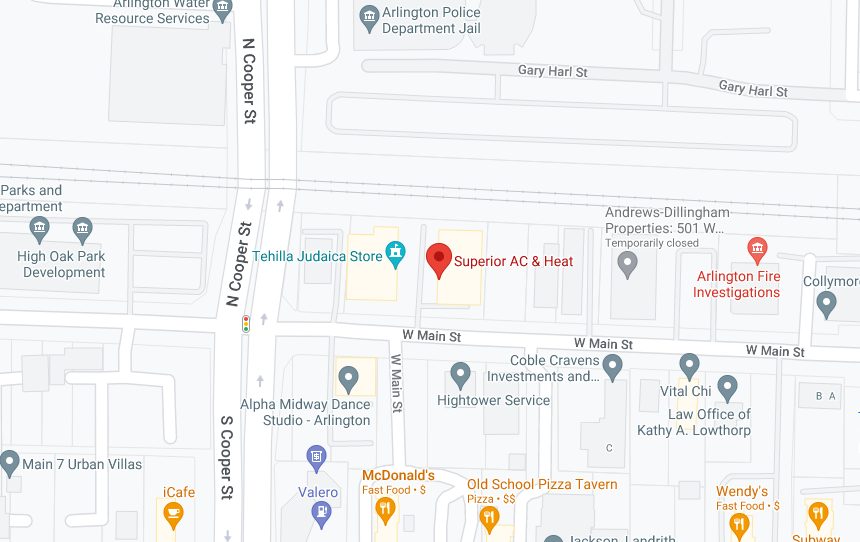How Do Air Conditioners Work – Central Air Conditioning
Central air conditioners work by circulating cool air through a system of supply and return ducts. This system provides cooled air in a centralized location, typically a home or business, and is controlled by a thermostat.
The central AC system is made up of several key components:
- The Compressor: The compressor is the heart of the cooling cycle. The cycle begins when the compressor pumps refrigerant to the condensing coil in the outdoor unit of the AC system.
- Condensing Coils: The condensing coil is where the refrigerant gas releases the heat it absorbed from your home’s air and becomes a high-pressure liquid.
- Expansion Valve: This high-pressure liquid refrigerant then passes through an expansion valve, where it turns back into a low-pressure gas. The sudden drop in pressure cools the refrigerant, which is now ready to absorb heat from your home again.
- Evaporator Coils: The low-pressure refrigerant gas is then circulated through the evaporator coil located in the indoor unit. As the warm indoor air is blown over the evaporator coil by the fan, the refrigerant absorbs the heat, and the cooled air is circulated back into your home.
- Air Handler/Blower: The air handler or blower inside your HVAC system pushes the cooled air through the ducts and into the various rooms in your home.
- Air Filters: The air filters in your system help to remove particles like dust and allergens from the air before it’s circulated back into your home.
- Thermostat: The thermostat allows you to control the temperature in your home by communicating with the AC system. When the desired temperature is reached, it signals the system to turn off. When the temperature rises, it signals the system to turn back on.
This process repeats continuously until the desired temperature is maintained in your home. The main goal of a central air conditioning system is to reduce the temperature and humidity levels inside your home, providing you a comfortable environment.
What is Central Air?
Central air conditioning is a cooling system that uses ducts to distribute cooled and dehumidified air to all areas in a building.
he process begins with a high-powered compressor cooling refrigerant in the outdoor unit, which then moves into an indoor unit. Here, warm indoor air is drawn in and blown over the cooled evaporator coil. The refrigerant absorbs the heat from the air, and the resulting cool air is then circulated back throughout the home through ductwork. This system is controlled by a central thermostat, allowing you to maintain consistent temperatures throughout the entire building.
Central air is typically more efficient and effective at cooling large spaces compared to individual room air conditioners.

The Origin of Air Conditioners
The concept of air conditioning has been in existence for thousands of years. Ancient Romans, for example, had a system that used aqueduct water to cool the walls of their homes. But it was in the 19th century that the foundation for modern air conditioning systems was laid. Dr. John Gorrie, a Florida physician, invented a machine in the 1830s that made ice using compression to cool his patients’ rooms.
However, the first true air conditioner was invented by Willis Haviland Carrier in 1902. Carrier was a trained engineer working for the Buffalo Forge Company, and he developed the device to solve a humidity problem at the Sackett-Wilhelms Lithographing and Publishing Company in Brooklyn, New York. Excess humidity was causing problems with the color register in the company’s printing process.
Carrier’s invention controlled humidity using cooling coils and maintained a constant moisture level, and it could also heat the air, if needed. It was the first system that allowed humans to control the temperature and humidity level in indoor spaces, and Carrier’s breakthrough marked the beginning of the modern air conditioning era.
How Air Conditioners Have Changed Over the Years
Over the years, air conditioners have undergone significant transformations. Early air conditioning units were massive and cost-prohibitive for most people. They also consumed a lot of energy and were mainly used in industrial applications and luxury establishments.
In the 1920s and 1930s, the first residential air conditioning units were introduced. These were still quite large and expensive. It wasn’t until the 1950s and 1960s that manufacturers began producing smaller, more affordable units that were accessible to average homeowners.
The energy crisis of the 1970s led to a new focus on energy efficiency in air conditioning technology. This led to the development of the Seasonal Energy Efficiency Ratio (SEER) and mandated minimum efficiency standards for air conditioners.
Today, modern air conditioners are significantly more energy-efficient, quieter, and more effective at cooling than their early counterparts. Many of them use environmentally friendly refrigerants and are compatible with smart home technology. This allows homeowners to control their home’s temperature remotely and optimize the system’s performance. The future of air conditioning is likely to see even more innovations, with a greater focus on sustainability, energy efficiency, and smart technology integration.
How Air Conditioners Have Changed Over the Years
Over the years, air conditioners have undergone significant transformations. Early air conditioning units were massive and cost-prohibitive for most people. They also consumed a lot of energy and were mainly used in industrial applications and luxury establishments.
In the 1920s and 1930s, the first residential air conditioning units were introduced. These were still quite large and expensive. It wasn’t until the 1950s and 1960s that manufacturers began producing smaller, more affordable units that were accessible to average homeowners.
The energy crisis of the 1970s led to a new focus on energy efficiency in air conditioning technology. This led to the development of the Seasonal Energy Efficiency Ratio (SEER) and mandated minimum efficiency standards for air conditioners.
Today, modern air conditioners are significantly more energy-efficient, quieter, and more effective at cooling than their early counterparts. Many of them use environmentally friendly refrigerants and are compatible with smart home technology. This allows homeowners to control their home’s temperature remotely and optimize the system’s performance. The future of air conditioning is likely to see even more innovations, with a greater focus on sustainability, energy efficiency, and smart technology integration.
Types of Central Air Conditioners
There are several different types of air conditioners used in homes and commercial buildings. Here are some of the most common ones:
- Central Air Conditioners: These systems circulate cool air through a system of supply and return ducts, providing cooled air from a centralized location throughout an entire home or building. They are typically controlled by a thermostat and offer efficient cooling for large spaces.
- Ductless, Mini-Split Air Conditioners: These are ideal for cooling specific rooms or zones within a house. Each zone has its own thermostat, so you only need to condition the space when needed, which can save energy.
- Window Units: These are single units designed to cool a single room. They’re installed in a window and exhaust heat and humidity from the room to the outside.
- Portable Units: These are similar to window units but can be moved from room to room. They also need to be near a window or vent for proper ventilation.
- Hybrid or Dual Fuel Air Conditioners: These systems alternate between burning fossil fuels and using electricity to run. They intelligently switch between energy sources, depending on outdoor conditions, to save money and energy.
- Geothermal Heating and Cooling: These systems use the constant temperature of the earth to cool and heat the house. They’re expensive to install but offer lower operating costs.
- Smart Air Conditioners: These are often WiFi-enabled, allowing users to adjust and program settings from a mobile device or using a home automation system.
Each type of air conditioner has its own advantages and disadvantages. The best choice for a given application will depend on a variety of factors, such as the size and layout of the space, the local climate, and the budget for both installation and ongoing operation costs.
Get The Perfect New AC Installed In Your House
Getting the perfect AC system for your house is an important step towards achieving optimal comfort and energy efficiency. Here’s how customers of Superior AC & Heat can make that happen:
- Initial Consultation: The process starts with a consultation. The Superior AC & Heat team will listen to the customer’s needs, including preferred temperature settings, specific room needs, and energy efficiency goals. It’s also essential to share any concerns about current AC performance, including uneven cooling, high utility bills, or excessive noise.
- Home Evaluation: Next, Superior AC & Heat will perform a thorough evaluation of the home. They’ll assess the size and layout of the house, the current insulation, the condition and design of the ductwork, and the local climate. This information is crucial to determine the right size and type of AC system for the home.
- System Selection: Based on the consultation and home evaluation, Superior AC & Heat will provide recommendations for the most suitable AC systems. They’ll discuss the pros and cons of each option, including aspects such as energy efficiency, noise levels, and smart home compatibility. They can also discuss various brands and models, as they work with a wide range of high-quality, reliable AC manufacturers.
- Professional Installation: Once the ideal AC system has been selected, the Superior AC & Heat technicians will schedule and perform the AC installation. They’ll ensure everything is installed correctly and safely, test the system to make sure it’s running properly, and walk the customer through the controls and maintenance procedures.
- Ongoing Support: After the installation, Superior AC & Heat provides ongoing support and maintenance services to keep the new AC system running optimally. They can perform regular check-ups, tune-ups, and repairs as needed.
Superior AC & Heat is dedicated to providing a smooth, hassle-free installation process, ensuring each customer ends up with an AC system that fits their needs and provides years of reliable service.




